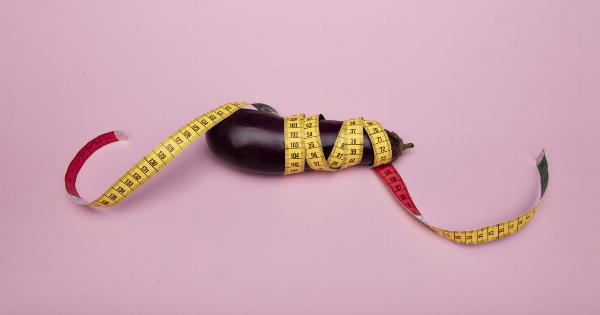Many people have long been fascinated by the intricacies and nuances of human sexuality. One question that often arises is whether there is a link between vaginal size and sexual behavior.
Some individuals believe that a larger or smaller vaginal size may influence sexual pleasure and overall satisfaction. However, it is crucial to approach this topic with scientific rigor and an understanding of the factors that contribute to sexual experiences.
In this article, we will delve into the research surrounding vaginal size and its potential impact on sexual behavior.
What Determines Vaginal Size?
Vaginal size can vary among individuals, yet it is important to note that there is no standard or “normal” size.
The average depth of the vagina is approximately 3 to 4 inches when unaroused, but it can expand substantially with arousal or childbirth. Several factors influence the size and shape of the vagina, including genetics, hormonal fluctuations, pelvic muscle tone, and age.
While some people may have concerns about their vaginal size, it is important to remember that natural variations exist and are perfectly normal.
The Concept of Sexual Behavior
Before exploring the potential link between vaginal size and sexual behavior, it is vital to define what is meant by “sexual behavior.” Sexual behavior encompasses a wide range of activities that are consensual and engage individuals for sexual pleasure or bonding. It includes acts such as sexual intercourse, oral sex, masturbation, and various forms of foreplay. Understanding this context, we can then examine the potential interplay between vaginal size and sexual experiences.
Perceptions and Expectations
Society often perpetuates certain beauty standards and expectations when it comes to body size and shape, including expectations regarding different anatomical features.
In the realm of sexuality, these perceptions and expectations can contribute to anxiety or insecurities for some individuals. It is essential to remember that sexual satisfaction and pleasure rely on multiple factors, including emotional connection, communication, and sexual skills. Focusing solely on vaginal size oversimplifies the complex nature of human sexual experiences.
Sexual Pleasure and Vaginal Size
Sensitive nerve endings within and around the vagina, primarily concentrated on the external portion known as the clitoris, play a significant role in sexual pleasure for people with vaginas.
The size of the vaginal opening or canal itself may be less influential in comparison. Research suggests that the ability to experience sexual pleasure generally depends on factors such as arousal level, emotional intimacy, and psychological well-being, rather than the absolute size of the vagina.
Understanding Sexual Satisfaction
Sexual satisfaction is highly subjective and varies from person to person. While some individuals may report a preference for particular sensations or experiences during sexual activity, it is crucial to highlight that preferences are not universal.
Partners in intimate relationships must prioritize open communication, actively exploring each other’s desires and needs. Mutual consent and the understanding that pleasure and satisfaction come in different forms are paramount in fostering a fulfilling sexual experience.
The Role of Pelvic Floor Muscles
Vaginal size can often be confused with pelvic floor muscle tone. The pelvic floor muscles, which include the pubococcygeus muscle, play a vital role in sexual function.
A strong pelvic floor can enhance sexual experiences by increasing muscle control, providing support, and potentially leading to more intense orgasms. Engaging in regular pelvic floor exercises, known as Kegel exercises, can help strengthen these muscles regardless of vaginal size.
Misconceptions and Cultural Beliefs
Misconceptions and cultural beliefs surrounding vaginal size and sexual behavior can persist, perpetuating harmful stereotypes or stigmatization.
It is important to challenge these beliefs, educate ourselves, and promote a more inclusive and informed understanding of human sexuality. By embracing diversity and dispelling misconceptions, we can foster a more positive and accepting environment for individuals of all backgrounds and body types.
Scientific Studies and Evidence
The scientific literature regarding the correlation between vaginal size and sexual behavior is limited. Few rigorous studies directly investigate this relationship.
Instead, much of the available research focuses on sexual satisfaction and function as a broader concept, without isolating vaginal size as the primary variable.
One study conducted in 2015, published in the Journal of Sexual Medicine, examined the potential relationship between vaginal dimensions and sexual function.
The researchers found no significant correlation between vaginal depth and female sexual function. It is essential to note, however, that this study focused solely on heterosexual individuals and did not consider other types of sexual activities or orientations.
In summary, the current scientific evidence does not support a direct link between vaginal size and sexual behavior.
Sexual pleasure and satisfaction are multifaceted and influenced by numerous elements such as emotional connection, communication, and overall physical and mental well-being. It is important to prioritize open conversations with partners, embrace sexual diversity, and debunk myths surrounding vaginal size to foster happier and healthier sexual lives.































